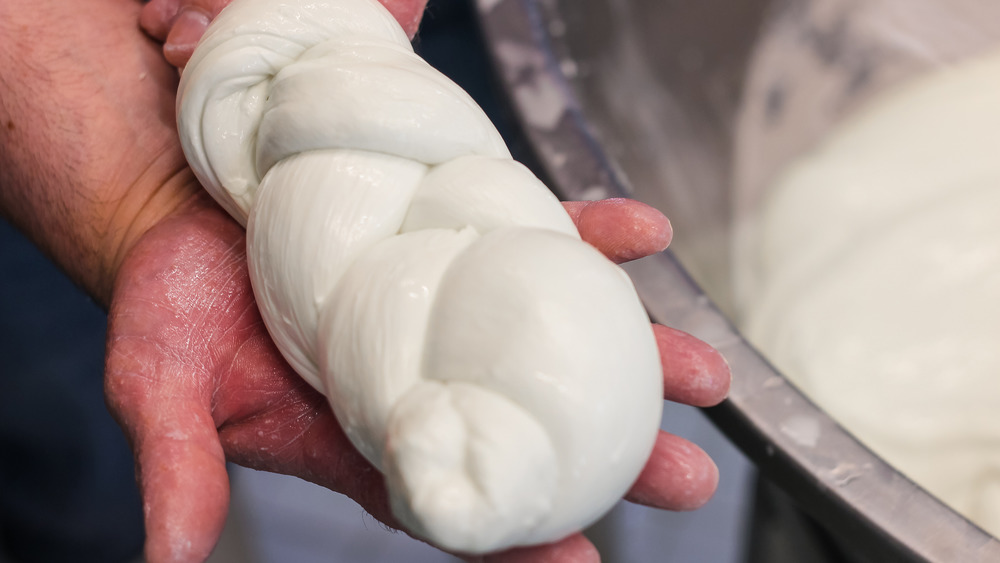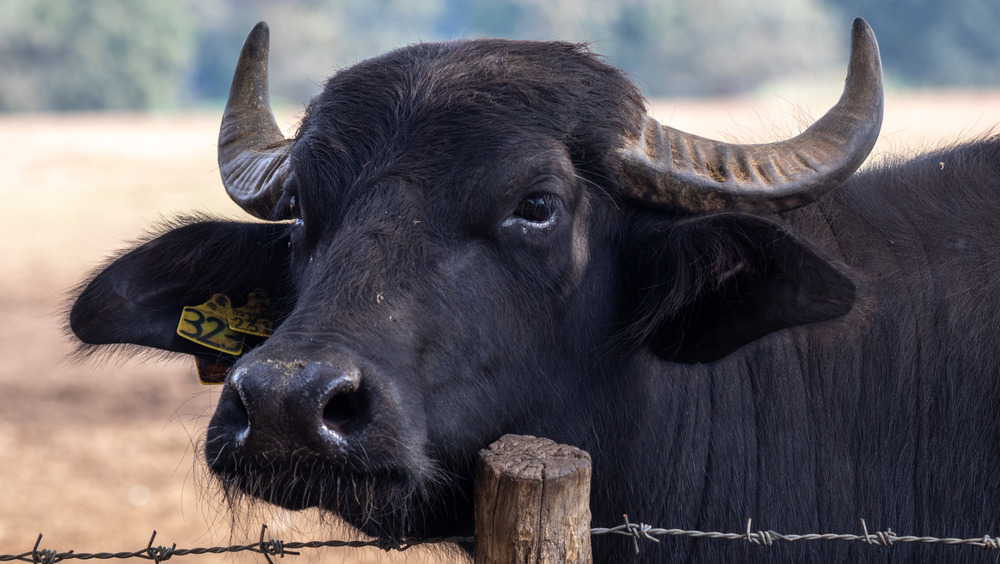What You Didn't Know About Mozzarella Di Bufala
There's regular mozzarella cheese and then there's buffalo mozzarella cheese. Or, as Italians would say, mozzarella di bufala. An Italian delicacy and made in accordance with guidelines set forth by the Consorzio Tutela Mozzarella di Bufala Campana, it has been dubbed one of the most sought-after cheeses in the world (via Delicious Italy). In an article from The New York Times Magazine, the author even goes so far as to describe buffalo mozzarella as "a dream so exotic and powerful that it drives otherwise sensible people into ruinous monomaniacal quests." Basically: Cheese connoisseurs are obsessed with it.
If you've ever eaten buffalo mozzarella, you know how delicious it is, with its higher fat content (nearly twice that of cow's milk mozzarella, according to Food Republic) and its rich and creamy texture. But the origin of the fancy white cheese is likely a mystery to you. Here's what you probably didn't know about buffalo mozzarella, specifically where it actually comes from.
Mozzarella di bufala is not made from regular buffalo milk
Buffalo mozzarella is in fact made from buffalo milk — but it's not the big, brown beasts that you see grazing in pastures in farm country (aka the ones that give us delicious bison burgers!). Instead, buffalo mozzarella is made from the milk of a very specific breed of water buffalo: Bufala Mediterranea Italiana (via Delicious Italy). No one is completely certain about how or when these water buffalo were brought over from Southeast Asia to Italy, but Grapes & Grains says records report that it was likely sometime between the seventh and tenth centuries.
These Mediterranean water buffalo don't produce as much milk as cows, explains Culture, but the milk that they do produce is higher in fat solids, which is what gives their milk a creamier, richer flavor. The cheese-making process for buffalo mozzarella is essentially the same as that of regular mozzarella; however, The Spruce Eats reports that it takes nearly double the time and the buffalo milk costs three times as much as regular milk (hence the higher price).

